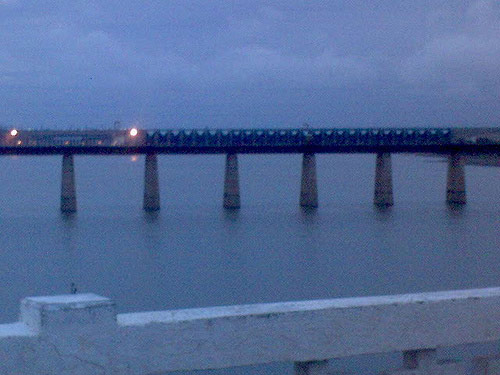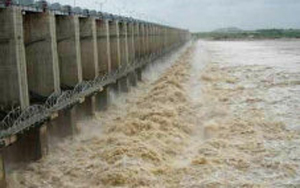Almatti Dam
|
About:
|
.jfif)
The Almatti Dam is a major hydroelectric and irrigation project built on the
Krishna River in northern Karnataka, India. Completed in 2005, it is one of
the largest dams in Karnataka and a key source of water and power for the
surrounding regions. The dam’s reservoir, also known as the Lal Bahadur
Shastri Sagar, plays a crucial role in supplying water for irrigation,
drinking, and electricity generation. The Almatti Dam, with its beautiful
landscape and gardens, has also become a popular tourist destination.
|
Location info:
|
| Almatti Dam is located near the town of Almatti in the Bagalkot district of Karnataka,
around 70 km from the city of Bijapur (Vijayapura) and approximately 200 km from Hubli.
|
Climate/Weather of Almatti Dam:
|
| Summer (March-May): Hot and dry, with temperatures ranging from 30°C to 42°C.
Monsoon (June-September): Moderate to heavy rainfall, which raises the water level of
the dam and fills the surrounding landscape with lush greenery.
Winter (October-February): Pleasant and cool, with temperatures between 15°C and 28°C,
making it an ideal time to visit. |
History of Almatti Dam:
|
| The Almatti Dam was built as part of the Upper Krishna Project to utilize the waters of
the Krishna River for irrigation and hydroelectric power. Construction began in the late
20th century, and it was completed in 2005. This multi-purpose project aimed to boost
agriculture, control floods, and support local economies by supplying reliable water and
electricity. The dam has also played a role in mitigating the water disputes between
Karnataka and neighboring states, especially Maharashtra and Andhra Pradesh.
|
Interesting things to do:
|
| Visit the Dam Viewpoints: Enjoy panoramic views of the dam and the Krishna River from
designated viewpoints.
Stroll through the Rock Garden: This beautifully landscaped garden has sculptures,
flowering plants, and fountains, making it ideal for a peaceful walk and photo
opportunities.
Boating in the Reservoir: Seasonal boating facilities are available, allowing visitors
to explore the tranquil waters of the reservoir.
Photography: Capture the scenic landscapes, especially around the reservoir, gardens,
and viewpoints. The monsoon and winter seasons provide the best backdrop. |
Interesting things to Visit:
|
| Rock Garden: A large garden with beautifully arranged rocks, sculptures, and landscaped
greenery, located near the dam.
Lal Bahadur Shastri Garden: A picturesque garden near the dam, named in honor of India’s
former Prime Minister, which includes fountains and well-maintained flower beds.
Krishna River Viewpoints: Several viewpoints along the Krishna River provide scenic
views of the river, dam, and surrounding hills.
Bijapur (Vijayapura): Known for its historical monuments, including Gol Gumbaz, Ibrahim
Rauza, and Jumma Masjid, located about 70 km from the dam. |
Mobile range info:
|
| Most mobile networks offer good coverage in the Almatti Dam area, but there may be
occasional weak signals in remote or surrounding rural areas.
|
How to reach Almatti Dam?
|
| Nearest Railway Station:The Almatti railway station is located close to the dam
and connects to major cities in Karnataka and nearby states. |
| Nearest Airport: The nearest airport is Hubli Airport, around 200 km from
Almatti. Alternatively, Belgaum Airport is about 220 km away. |
| Road Transport: Almatti is well-connected by road, and you can reach it via state
transport buses, private buses, or taxis from nearby cities like Bijapur and Bagalkot.
|
Nearest Visiting places in Almatti Dam:
|
|
Bijapur (Vijayapura): Known for historical monuments and architectural marvels from the Adil Shahi dynasty.
Badami: A historic town famous for its ancient rock-cut temples and cave temples, located around 100 km from Almatti.
Pattadakal: A UNESCO World Heritage Site with ancient temples and monuments, located approximately 80 km away.
A file photo of Bara Kaman Circa 1870
Malik-e-Maidan (The
Monarch of the Plains) the largest medieval cannon in the world. Being 4 m
long, 1,5 m in diameter and weighing 55 tons, this gun was brought back from
Ahmadnagar in the 17th century as a trophy of war by 400 oxen, 10 elephants
and tens of men. It was placed on the Sherza Burj (Lion Gate) on a platform
especially built for it. The cannon's nozzle is fashioned into the shape of
a lion's head with open jaws & between the carved fangs is depicted an
elephant being crushed to death. It is said that after igniting the cannon,
the gunner would remain underwater in a tank of water on the platform to
avoid the deafening explosion. The cannon remains cool even in strong
sunlight and if tapped, tinkles like a bell. In 1854 the cannon was
auctioned for Rs. 150 but the sale was cancelled in the end.
|
Nearest Petrol Pump:
|
| Petrol pumps are available in Almatti town and nearby Bagalkot. It is recommended to refuel in these towns before exploring the dam or surrounding areas.
|
Hotels/Lodge/Accommodation nearby Almatti Dam:
|
| KSTDC Mayura Adil Shahi, Bijapur: A budget-friendly option located in Bijapur.
Badami Court Hotel: Located in Badami, ideal for those exploring nearby historic sites.
Homestays and Guesthouses: Smaller guesthouses and homestays are available near Almatti and in surrounding towns. |
Things to carry:
|
| Comfortable walking shoes for exploring the dam, gardens, and viewpoints.
Sun protection, including a hat, sunglasses, and sunscreen.
Water bottle and light snacks, especially if visiting remote areas.
Camera or binoculars for scenic and wildlife views.
Personal essentials and any necessary medications. |
Tips & Suggestions for Almatti Dam:
|
| Visit during the winter or post-monsoon season when the weather is pleasant, and the dam area is green and scenic.
Check with local authorities if boating is available, as it is often seasonal.
Exercise caution near the dam and water areas, especially during the monsoon when water levels rise.
Respect local guidelines, especially if visiting gardens and restricted areas around the dam. |
Help Line/Phone Number:
|
| Karnataka Tourism Helpline:080-2235-2828 |
| Local Police Station (Bagalkot): +91-8354-220-015 |





















